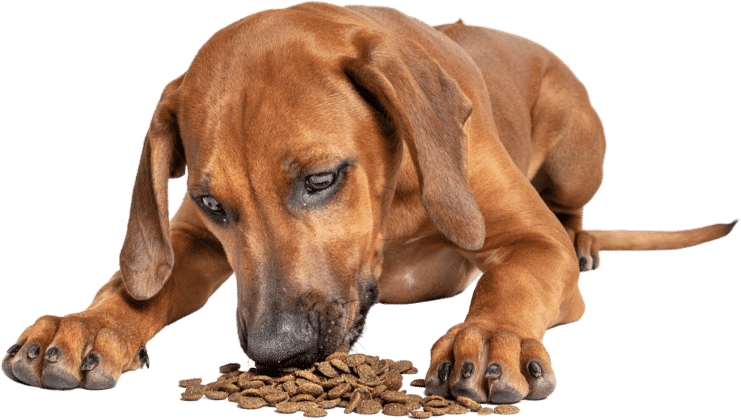Is there anything more heartbreaking than a dog suffering?
We think not. But plenty do suffer as a result of food allergies. Dogs, like humans, can be allergic to many things, including types of food. Hypoallergenic dog food may be necessary, but does not have to be the first step.
What can I do if my dog is allergic to a type of food?
An elimination diet for dogs is a process of going back to basics to help determine if food is contributing to your dogs allergies or symptoms. Allergens may also come from environmental factors, so always discuss your dog’s treatment with your vet.
Here are the basic steps in an elimination dietary trial for your dog:
1. Consult with a veterinarian: It is important to consult with a veterinarian before starting an elimination diet for your dog. They can help you identify any underlying health conditions that may be causing your dog’s symptoms and guide you on how to perform the elimination diet safely. These diets should be run for the set amount of time only as they are not a complete and balanced diet which can lead to deficiencies over time.
2. Choose a novel protein and carbohydrate source: In consultation with your vet, choose a single protein and single carbohydrate source that your dog has never eaten before. As proteins are the most likely cause of food intolerances the focus is choosing one your pup has never eaten before. This could include proteins such as insects, venison, rabbit, or duck, and carbohydrates such as sweet potato, quinoa, or sorghum. The goal is to choose a source that your dog has not been exposed to before to eliminate the possibility of an allergic reaction.
3. Eliminate all other sources of food: Remove all other sources of food, treats, and chews from your dog’s diet. This includes any flavored medications, vitamins, or supplements. Your dog should only eat the chosen protein and carbohydrate source during this phase. Make sure everyone in the family is on board so no one gives any sneaky treats.
4. Feed the elimination diet for 6 weeks: Feed your dog the chosen protein and carbohydrate source exclusively for at least 6 weeks. This will give your dog’s body enough time to eliminate any allergens and for you and your vet to observe any changes in their symptoms.
5. Reintroduce foods one at a time: After the elimination phase, start reintroducing individual foods one at a time, in small amounts, over the course of several days. To start with this will be single proteins such as chicken, beef, or fish before moving onto other foods. This challenge phase will help you identify which foods are causing your dog’s symptoms.
6. Keep a food diary: Keep a detailed food diary during the elimination phase and reintroduction phase. This will help you track what your dog is eating and any symptoms they are experiencing.
Insects are a great novel protein, full of nutrients that are great for your dog. For this reason, Feed For Thought is low-allergenic and may be suitable if your dog is experiencing protein allergy related issues.
– Dr. Heidi (Feed For Thought Vet/Animal Lover) and Alison (Founder/CEO/Dog Lover)
